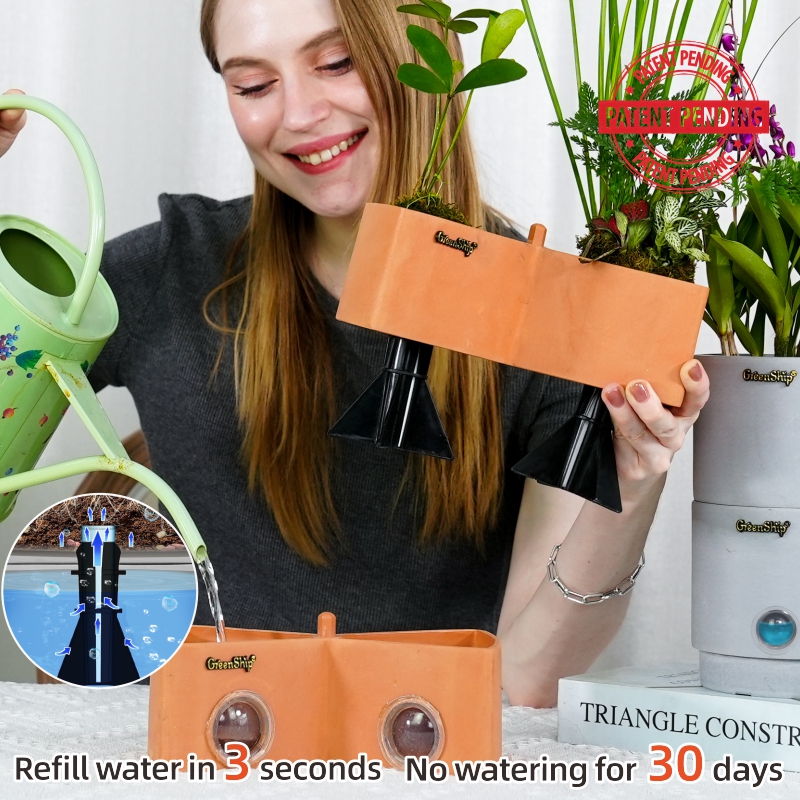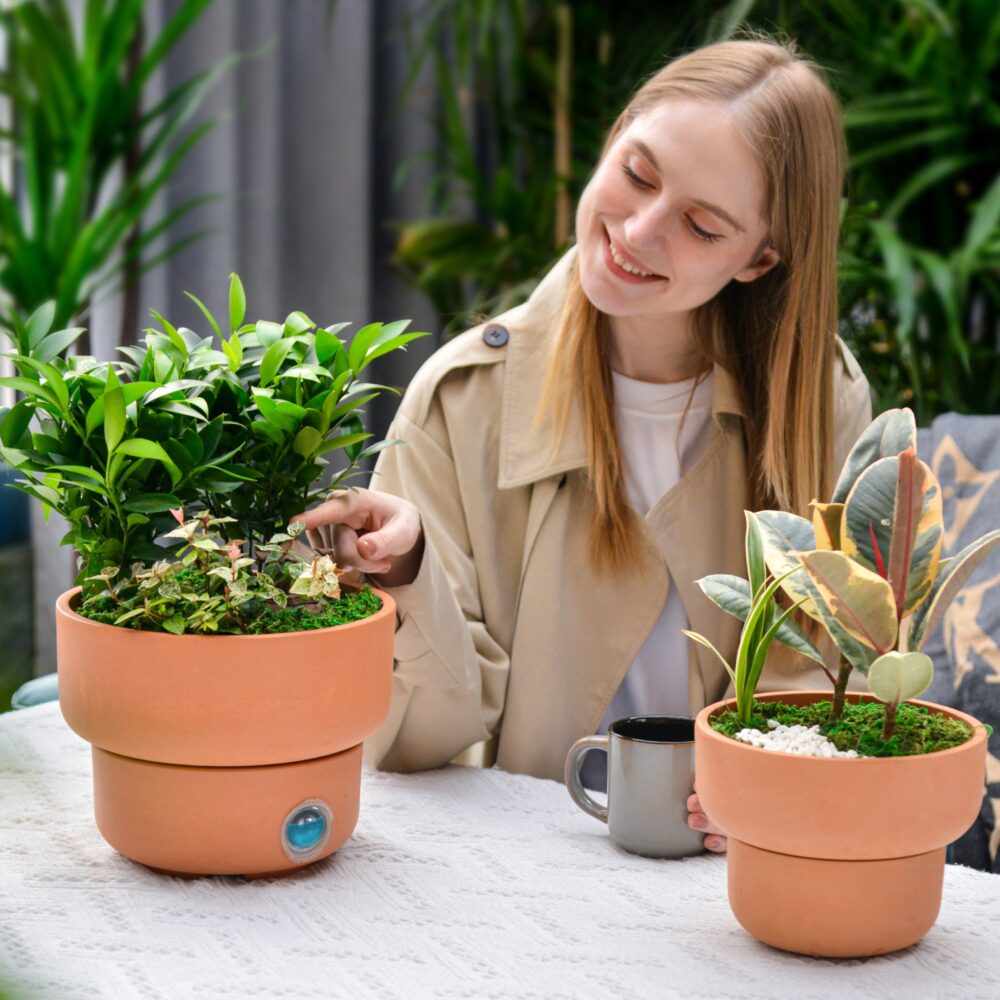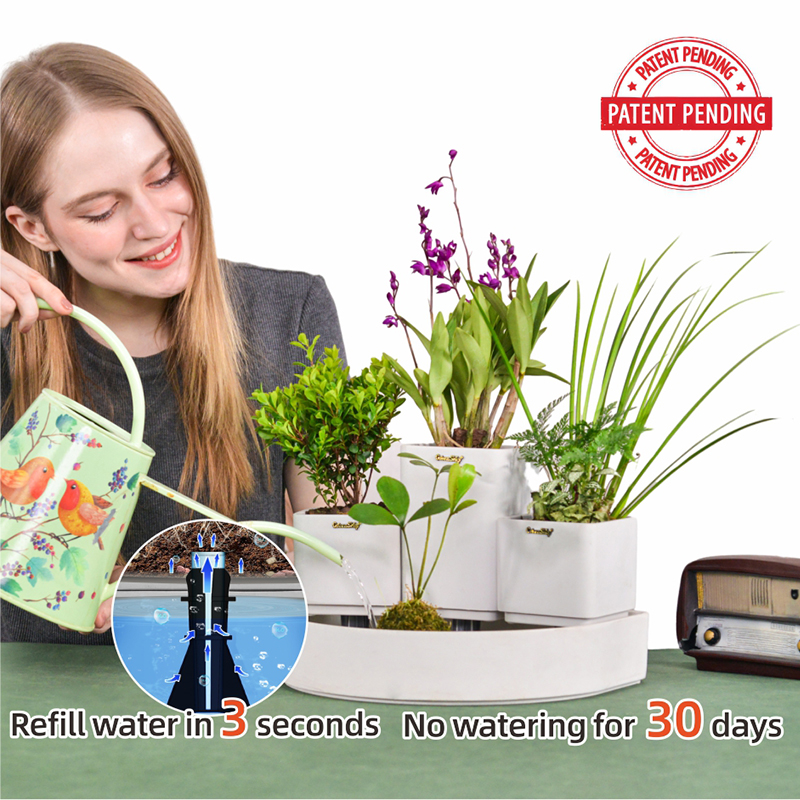Which Pots are Best for Indoor Plants?
Selecting the right pot for your indoor plants is essential for their health, growth, and aesthetic appeal. The ideal pot not only supports the plant’s root system but also complements your home decor and makes plant care easier. Here’s a comprehensive guide to help you choose the best pots for your indoor plants, considering factors like material, size, drainage, and aesthetics.
Key Factors to Consider When Choosing a Pot:
- Material: The material of the pot plays a significant role in water retention, air circulation, and overall durability. Here are some of the most common pot materials:
- Terracotta Pots:
- Pros: Terracotta is a porous material that allows for excellent air circulation and moisture evaporation. It’s ideal for plants that prefer well-drained soil, such as succulents and cacti.
- Cons: Due to its porous nature, terracotta dries out quickly, requiring more frequent watering. It can also be prone to cracking in extreme temperatures.
- Best For: Plants that need good drainage and like to dry out between waterings.
- Ceramic Pots:
- Pros: Ceramic pots are durable, come in various glazes and colors, and offer an elegant aesthetic. They retain moisture better than terracotta and are less prone to drying out too quickly.
- Cons: While less porous, they can still become heavy and difficult to move, especially when filled with soil. Be sure to check for proper drainage holes.
- Best For: Plants that need consistent moisture and for adding a decorative touch to your indoor space.
- Plastic Pots:
- Pros: Lightweight, durable, and affordable, plastic pots are easy to move and come in various colors and shapes. They’re also available in self-watering varieties, which can simplify plant care.
- Cons: Plastic pots can look less attractive than ceramic or terracotta pots, though this depends on the style.
- Best For: Budget-friendly options and for plants that don’t need high aesthetic appeal.
- Self-Watering Pots:
- Pros: Self-watering pots provide a consistent moisture level, reducing the need for frequent watering and preventing both overwatering and underwatering. They are particularly beneficial for busy individuals or people with irregular watering schedules.
- Cons: These pots can be more expensive than traditional pots, and some models may require occasional maintenance to ensure the water reservoir works properly.
- Best For: Low-maintenance plant care, especially for those with busy lifestyles or forgetful plant owners.
- Terracotta Pots:

- Drainage: Drainage is one of the most important factors when selecting a pot. Without proper drainage, excess water can accumulate at the bottom of the pot, leading to root rot. Most plants need drainage holes to thrive, allowing excess water to escape and preventing the soil from becoming too soggy.
- Essential for Most Plants: Ensure your pot has at least one drainage hole to allow water to flow out freely. Some pots come with a saucer to catch excess water, which helps keep your floors clean and dry.
- Size: Choosing the right size pot is key to promoting healthy root growth. The pot should be slightly larger than the plant’s root ball, allowing room for growth while preventing water from pooling at the bottom.
- Tips for Size: When repotting, choose a pot that’s 1–2 inches larger in diameter than the current pot. Too large a pot can lead to waterlogged soil, as the plant may struggle to absorb the excess moisture.
- Aesthetics: The pot should complement your interior decor and suit the style of your space. From minimalist designs to colorful, patterned options, there’s a pot style for every home.
- Consider the Style of Your Home: For a modern look, opt for sleek, minimalist pots in neutral colors. If you prefer a more rustic vibe, terracotta or woven baskets can add charm to your space.
Top Pot Choices for Indoor Plants:
- Self-Watering Pots:
- Why They’re Great: These pots take the guesswork out of watering. With a built-in water reservoir, they ensure consistent moisture levels and reduce the risk of overwatering or underwatering.
- Best For: Busy people, frequent travelers, or anyone looking to simplify plant care. They are also perfect for plants that require consistent moisture, like tropical varieties.

- Terracotta Pots:
- Why They’re Great: Terracotta pots are classic and provide excellent air circulation around the roots. They are great for plants that need good drainage and prefer to dry out between waterings.
- Best For: Cacti, succulents, and other drought-tolerant plants that need well-drained soil.
- Ceramic Pots:
- Why They’re Great: Ceramic pots are durable, moisture-retaining, and come in a variety of beautiful styles. They add a touch of elegance and sophistication to any space.
- Best For: Houseplants that require consistent moisture, such as peace lilies, ferns, and pothos. They also work well for decorative purposes.
- Plastic Pots:
- Why They’re Great: Lightweight and affordable, plastic pots are easy to move and come in a wide range of sizes and colors. Many plastic pots are designed with drainage holes and are perfect for a wide range of indoor plants.
- Best For: Low-maintenance plants, including most herbs and foliage plants, and for those on a budget.
- Hanging Baskets:
- Why They’re Great: Hanging baskets are ideal for plants that have a trailing or cascading growth habit. They save space and add a vertical element to your home’s decor.
- Best For: Ivy, pothos, spider plants, and other hanging or cascading plants.
Conclusion
The best pot for your indoor plants depends on your plant’s specific needs, your aesthetic preferences, and how much maintenance you’re willing to provide. Self-watering pots are a great choice for low-maintenance plant care, while terracotta and ceramic pots are perfect for adding style and elegance. Plastic pots are budget-friendly and lightweight, making them a popular choice for many indoor gardeners. Whatever type of pot you choose, ensure it provides proper drainage, is the right size for your plant, and complements your interior decor. Happy planting!
18A22
By greenship|2024-03-26T01:16:07+00:00March 25, 2024|Categories: HomeOasis Self-Watering System|
Self-Watering Plant Pot Set of 2, Round Planter for Indoor Plants with Self Wicking Stand, Modern Decorative Flower Pots
By greenship-seo|2025-04-10T08:35:28+00:00January 6, 2025|Categories: HomeOasis Self-Watering System|Tags: Decorative Flower Pots, Self-Watering Pots|
23TB
By greenship|2024-03-26T01:15:31+00:00March 25, 2024|Categories: HomeOasis Self-Watering System|



